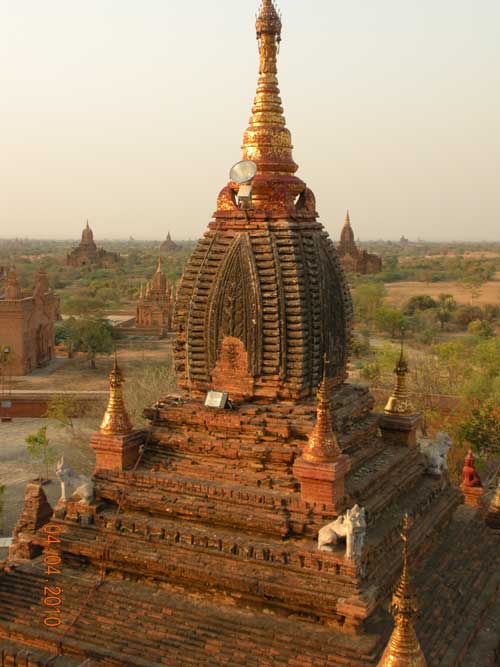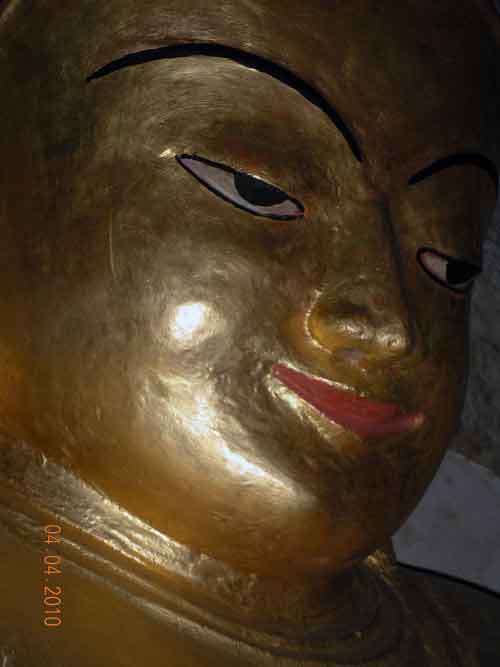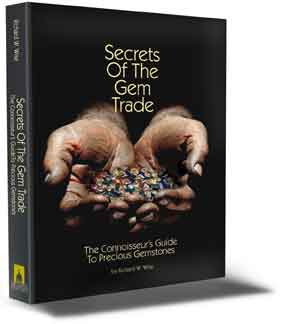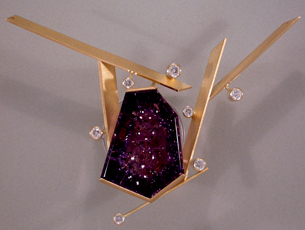
Possibilities for holiday giving
By Richard W. Wise, G.G.
© 2006
The holidays are fast approaching. I thought readers might like to take a look at a something new from our workshop.
During our summer show, I took the opportunity to select one of the most interesting of the Michael Dyber gem sculptures to make into a necklace and turned it over to Douglas Canivet. The center stone pictured is a 42.25 carat ametrene. This gem material shows both yellow and purple in the same crystal. It comes from only one mine, Anahi in Boliva. I like the combination of zoning and rich color and the sensitive way Michael integrated the natural features of the gem into a pleasing composition.
The necklace was completely hand fabricated. For those of you who don’t know, hand fabrication is the old method of hand making. We use the same methods as those pictured on the tombs of Egypt’s famous Valley of the Kings. In this case all the pieces were cut out of sheet gold. I don’t like to use the term handmade because everyone, including a lot of stuff that is mass-produced, is called “handmade.”
Construction and Materials:
The construction, exclusive of design time, took more than sixty hours, that’s a week and a half for a master craftsman of Doug’s caliber. We used 35.3 penny-weight (dwt.) of 18k gold. Penny weight is an old unit of measure, 20 dwt. to the ounce so a bit over an ounce and a half. The eight diamonds; 1.08 carat total weight of D-E, VS color ideal cut stones set in handmade tubes. Ideal cuts are perfectly proportioned stones that deliver between 92-98% total light return. They are dazzlers!
Notice the joinery, how the angles at which the gold links join create a juxtaposition of shape and plane that compliment the center sculpture. Note how the diamonds appear to float. The gold has a sandblasted finish. This allows the gems visual room to work.
Craftsmanship:
Contemporary hand fabricated jewels look simple. Because the designs are clean without excessive ornamentation you get the idea that they are simpler to make than say Victorian pieces with all the filagree. Not true! Most handmade jewelry is put together with gold solder and gold solder will not “fill in” empty space so every join must be fitted perfectly. Fine cabinetry is a good analogy. Its very much like building a desk or cabinet. Every angle requires a solder joint. It took about eight separate pieces just to make the setting for the center stone. In this necklace everywhere you see an angle there is a join and if the fit is not perfect you will see lumps, holes and porosity at the joint. In such a “simple” design there is no where to hide your mistakes. A master’s hand is evident not only in what you see but also in what you don’t see.
Handmade is better made:
Is there a difference between hand made and mass-manufactured. Most mass-manufactured jewelry is designed by people who have never worked in gold. The design is drawn or created on a computer then mastered in wax. The element of dialogue, the give and take between the artist and his materials together with the fine eye and sensitive mark of the hand is always missing. Then, of course, it is the only one! Does uniqueness have value? Today, much custom design is done with CAD software. A craftsman can tell a CAD designed piece a mile away. It is yet another step removed from the hand. To me CAD designed jewelry has a sterile soul-less quality.
Other Possibilities:
May I show you some of the newest additions to my gem collection? These are stones sourced on my recent trip to The Orient. These are one of a kind gems that to my eye are extraordinary.
Padparadscha Sapphire:
There seems to be a lot of interest in Padparadscha sapphire. As I define it in my book; Secrets Of The Gem Trade, Padparadscha, the word is a corruption of the Singhalese padma raga or “color of the Lotus”. Padparadscha is a pinkish orange to orangey pink sapphire. Here is the important point it must be a delicate hue. The Sri Lankans prefer as stone with a bit more pink than orange. This stone embodies the essence of the term. It is a 3.98 carat natural stone with no enhancement or treatment of any kind. It is has a flower-petal soft quality.
important point it must be a delicate hue. The Sri Lankans prefer as stone with a bit more pink than orange. This stone embodies the essence of the term. It is a 3.98 carat natural stone with no enhancement or treatment of any kind. It is has a flower-petal soft quality.
True un-monkeyed-around-with padparadscha sapphires is one of nature’s great rarities. This is one of the finest stones I have seen in my career. The shape makes it an excellent candidate for a pendant but if you will accept my advice, make a ring. Rings are for people who love gems and want to stop and admire.
Purple Mozambique Tourmaline:
Rare and beautiful, until the new find of cuprian tourmaline from Mozambique, I had never seen a purple tourmaline. Most purple tourmaline is actually purplish red. I am told that true purples have been found in the past few years but they were almost always heated to turn them the more desired electric blue.
I am told that the stones from Mozambique are of two types; those that can be successfully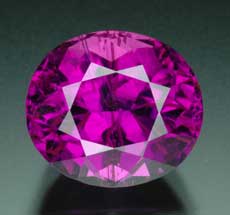 heated and those that cannot.
heated and those that cannot.
This one is a visually pure purple. It weighs 8.14 carats. In the magnified image you can see straight growth tubes but without magnification the stone is eye-flawless viewed face-up. It is a visually pure purple with no evidence of gray and it stands up well in both natural and incandescent lighting.
Fancy Color Diamonds; A Sweet Suite:
I tried to resist this delectable suite of orange and purple fancy color diamonds but I failed. The language of the GIA certificate calls the center a “Yellow-Orange” meaning that the two hues exist in fairly equal proportions. To me it is a yellowish-Orange, a true tangerine with all the warmth and richness of the sun kissed fruit. The two vivid purple-pinks are pure of hue with no gray or brown to either dull or muddy the hue. All three understated, elegant and beautifully cut.
exist in fairly equal proportions. To me it is a yellowish-Orange, a true tangerine with all the warmth and richness of the sun kissed fruit. The two vivid purple-pinks are pure of hue with no gray or brown to either dull or muddy the hue. All three understated, elegant and beautifully cut.
A Burma Gem:
This ruby is a 2.05 carat emerald cut gem. What is a “gem”. In the gem trade, this is the appellation reserved for the crème de la crème, the finest of the fine. Everything, color, cut, clarity and crystal must be outstanding for the gem type and here it is.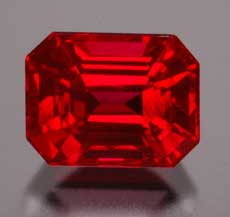
“Asking to see the pigeon’s blood is like asking to see the face of God.”
Anonymous Burmese Trader
Love that quote but the truth is not quite so mysterious. “Pigeon’s blood” is a pure medium dark red with a touch (10-15%) blue that when mixed with the red reads as purplish. As an old Burmese jeweler explained it; the blue is cancelled out its compliment, the rich yellow of high carat gold leaving the gem a visually pure scarlet when set.
We have a number of fine rubies as well as fine handmade originals, antique jewelry and gemstones pictured on our website: www.rwwise.com . Please take a look and if you see something you like call me at 800.773.0249 or 413.637.1589 if you live in Berkshire County.
Looking for a large stocking stuffer?
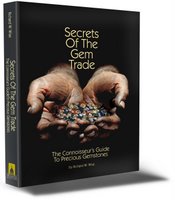
Consider Secrets Of The Gem Trade, The Connoisseur’s Guide To Precious Gemstones. Now in PAPERBACK for only $26.95 at our website or slightly higher at Amazon.com
www.secretsofthegemtrade.com.
“Wise is a renowned author… He’s done a marvelous job of this first book,
a monumental work, a tour de force… My recommendation: Buy this book”
Charles Lewton-Brain, Orchid
